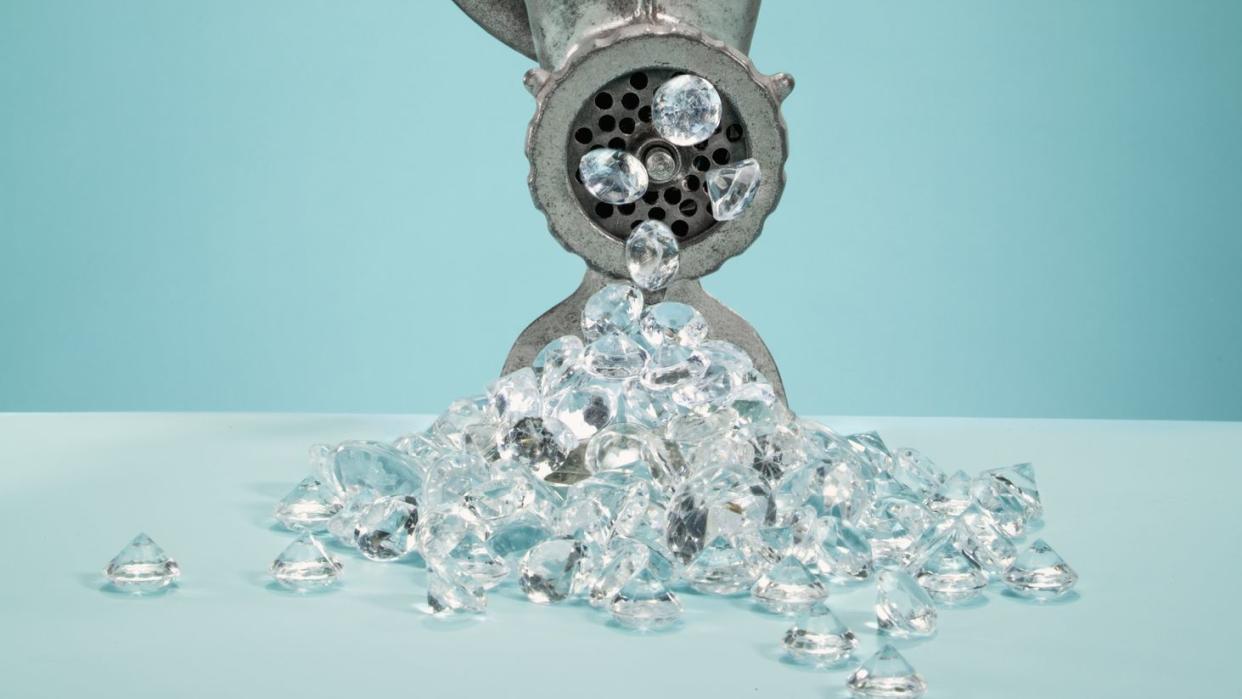Everything You Need to Know If You're About to Buy a Diamond Ring

In all their sparkly, shiny glory, diamonds have earned a timeless place in our jewelry drawers. They're chic, they come in all sorts of cuts and styles, and they wear perfectly with just about anything.
While we love a good historical romance novel, we're in the 21st century now, and choosing your perfect diamond can be all up to you. So whether you're guiding a partner to the princess-cut halo-set ring or you're investing in that eternity bracelet to celebrate you, understanding how to navigate the diamond-buying process is the key to your success. There's so much to know about, such as the quality, the cut and shape, and where the diamond is sourced. If you're in the market, we've gathered all the info you'll need ahead. Consider this your brilliant, knowledge-is-power guide to brilliance.
1. The Basics: Cut, Carats, Color, Clarity
Most fundamental of all is the 4Cs of diamonds:
Cut is the shape into which the stone has been—you guessed it—cut. A large part of the cut of a diamond that contributes to its value is its depth-to-width ratio (ranging from shallow to deep), as it impacts how the light interacts with the diamond. In other words, you want the perfect amount of depth that allows for that perfect amount of sparkly-sparkle, no matter the shape. Cut also refers to the shape of the diamond—pear, emerald, heart, for example.
Carat is the weight of the diamond. While one diamond may have a lower carat weight than another, it can look bigger because of its shape or setting. But it's the number of carats on the scale that's indicative of its worth.
Color should not be seen. Traditionally, the less visible the color is, the higher the quality. On the grading scale, D is the tops, indicating that a given diamond is entirely colorless (read: ideal). Z is the lowest, and will have a notably brown hue. So-called "fancy color" diamonds are rated separately, so don't be confused into thinking a Z-scale diamond is the same as, say, a yellow diamond—which is generally far more precious.
Clarity indicates the flaws or flawlessness of the stone. A pristine diamond is crystal-clear—aka "flawless" or "internally flawless." Inclusions are small imperfections that detract from the brilliance and natural beauty of diamonds. Truly flawless diamonds are super rare; the next highest ratings, which feel far more attainable for most shoppers, are Very Very Slightly Included (VVS1 and VVS2) followed by Very Slightly Included (VS2 and VS2), and the lowest on the scale are Slightly Included (SI1 and SI2).
2. Shape Up
When it comes to personal preference, shape is queen. Some of the most common, like emerald-cut, old mine-cut, brilliant-cut, and even heart-shaped, are readily available, while others like the Asprey (only hand-cut, with a letter "A" engraved into the edge), Ashoka (only 1 percent of raw diamonds can be cut this way), and Royal Asscher (fewer than 75 people on earth are able to cut this diamond perfectly), to name a few, are a bit trickier to find.

3. Who, What, and Definitely Where
No matter the style preference you have for your ring, where you buy your gems matters. Diamonds have a fraught history, and fakes and ethically dubious origins are still something to be careful about. Whether it's a trusted family jeweler or a beloved retail name that has a glittering storefront, do your research and then trust your gut. If something doesn't feel right, it probably isn't, and if transparency is limited, run for the hills. It's true when it comes to falling in love, and it's truer than ever when it comes to diamond buying. Diamonds are a precious resource, and how they're sourced and priced and presented will affect your wallet and your jewelry's longevity, not to mention the ease and peacefulness of the purchase process.
4. Society Statements
You might have guessed that diamond mining throughout history hasn't quite been the sustainable and eco-friendly practice modern consumers have come to demand from their products. If that's a big concern of yours, some brands are putting an emphasis on highlighting sustainability efforts and responsible sourcing practices. Be sure you know what you're buying and where it comes from, so you can stand behind it, too.
You Might Also Like


